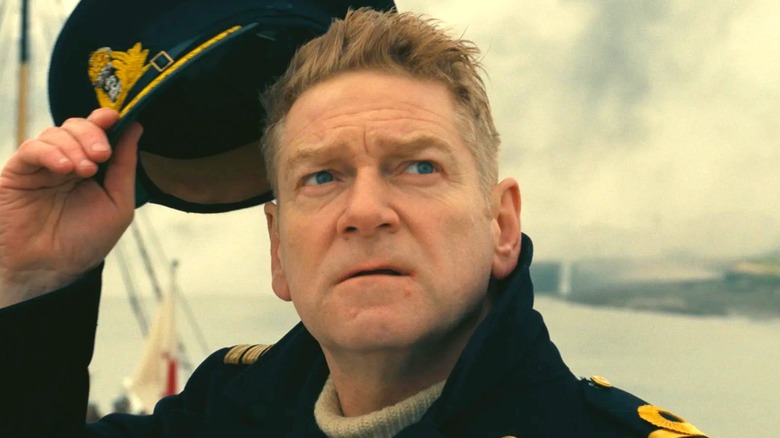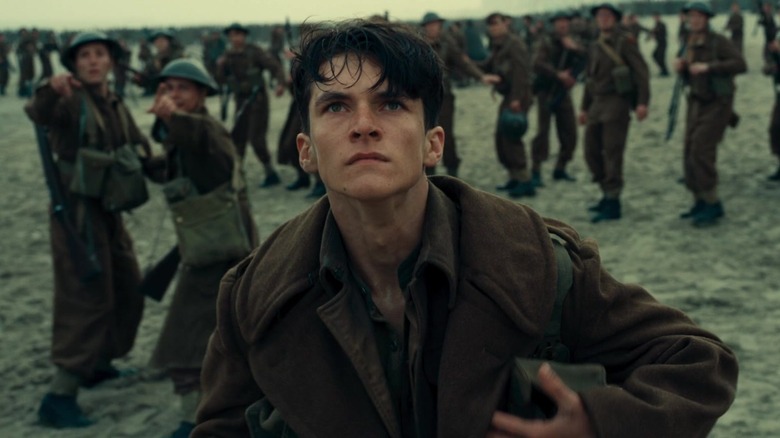Alfred Hitchcock Was Christopher Nolan's Guiding Light While Directing Dunkirk
In the opening scene of "Dunkirk," a small group of Allied soldiers is enveloped by a flurry of flyers sent in from unseen German troops, detailing how they have the allies surrounded on all sides. Before they can even process their predicament, the invisible bullets start flying. What starts as six survivors is quickly whittled down to a lone wolf (Fionn Whitehead), who ends up joining the remaining stranded soldiers on the beach. With hardly a word spoken, he waits for his collective fate among the others.
It should come as no surprise that Christopher Nolan is at his best when giving into his talents purely as a visual filmmaker. Most of his work is known for its practicality, as the "Inception" filmmaker has largely stuck to making his larger-than-life spectacles in-camera, whether it be the plane crash in "Tenet" or the truck flip in "The Dark Knight." He immerses you in the scope of the moment; dropping the audience into the midst of battle can be a challenging feat, but "Dunkirk" is an excellent example of immersion.
I remember seeing folks claim that the lack of character-driven focus made this Nolan's coldest film, but I'd argue the opposite. In many ways, it is his most empathetic. You come to know these people, not through their words, but through their movements, courage, and fear, in the face of their harrowing setting. In order to achieve this effect, Nolan only had to look to one of cinema's greatest masters.
Christopher Nolan channeled the language of suspense
During a 2017 interview with NPR, Christopher Nolan talks about how he approached the characters of "Dunkirk," not through extended stretches of dialogue, but through the visual complexion of an Alfred Hitchcock film:
"I wanted to produce a film that was almost entirely based on the language of suspense, which I think is the most visual of cinematic languages, which is why I think Hitchcock has always been held up as possibly the greatest director of all time. And what Hitchcock understood — and I've tried to emulate and really learn from — is that the audience can care about a character simply by virtue of what it is they're trying to achieve onscreen in a physical sense, a task they're trying to achieve."
A Hitchcock film works in spite of the dialogue, as its absence still leaves the mark of a visual storyteller. Think of the silent explanation of Jeffries' injury in "Rear Window," or the owl perched above the sinister Norman Bates in "Psycho." It's clear that Nolan adopted Hitchcock's visual metaphors, and for the better too.
"Dunkirk" starts you out feeling isolated in the belly of a massive space, where the threat of annihilation can come from land, air, or sea. You don't know who any of these folks are, but being trapped there among them makes the danger feel that much more present. In less than five minutes, the foundation of peril is established that anyone can identify and empathize with. Simply being there and looking up at the horizon of the Luftwaffe air bombers is enough to generate a great deal of suspense and dread.
"Dunkirk" is now streaming on Hulu.

